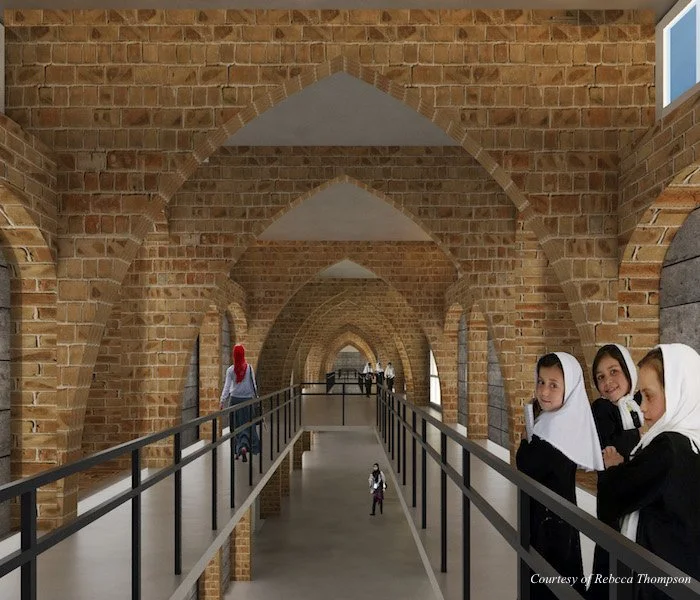Afghan Boarding School Design with UW Students
by Malahat Mazaher
Designing a boarding school for Afghanistan is as complex to the University of Washington students of architecture as the concept of having one is for Afghans. This quarter these aspiring architects are taught by our own Board member, Dave Miller, and their project is to design a boarding school in Afghanistan.Rebecca Thompson, a native of Seattle, like many of her classmates, chose this studio because of its focus on a project design overseas. Her design projects have always been in the Pacific Northwest. She is especially excited about this design because she gets to work on a boarding school so far away. She says this project is challenging compared to the designs she has worked on so far.Jeremy Smith, one of the other students in the class told me about the different types of research each one of them did before starting the design. Students have had to research culture, security, advocating for funds, typology, local materials and environmental conditions. Being mindful of these aspects of the design is a challenging task, and unlike many other designs done by other students at their level of studies.Rebecca and her classmates find designing the boarding school challenging because it goes beyond the conventional process of structure design, such as having to actively think of security, and cultural sensitivities to certain structures like the dorms, bathrooms and dining halls. When I asked Rebecca why she took this studio course, she said that “the main factor was designing a passive design that reflected the context environmentally and culturally, instead of a glass and steel structure, which does not make sense in Afghanistan as it would here in Seattle..” Passive design means using as much of the sun, natural ventilation, day lighting, cooling and heating, instead of relying on electrical and mechanical systems as well as using traditional materials and building methods. These aspects have inspired her to come up with a design of arches and vaults that create opportunities for outdoor courtyards and indoor sunspaces.Rebecca likes being part of this studio course because of its focus on integrating architecture and social issues like education for girls in Afghanistan. She adds,“I think a lot of times architects want to make a difference in the world through their designs and sometimes it does not happen. It is exciting to impact girls’ education by designing a school.” Rebecca focuses on capturing the emotional comfort in this space through her design. She further adds that it is a life-changing opportunity for girls to attend the boarding school but also a challenging one, leaving their family while still feeling safe in an unknown space is difficult and it is important that they find not just physical comfort but also emotional comfort.Khwaja Atif, an International student at the UW architectural studio from Pakistan, is impressed with the idea of a boarding school for high school students. This concept is new to him, as Pakistan does not have girls’ boarding schools. Additionally, Atif ‘s design is focusing on how to engage local community with the school. He suggested that the library of the school should be open to public so that an open and intellectual environment is encouraged. This idea makes the school not just a structure for the rest of the town rather a reminder of the impact knowledge can have.

